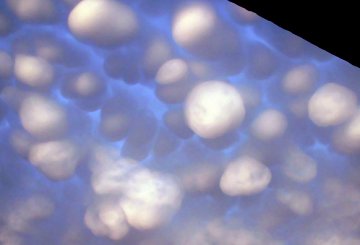 The space shuttle will fly over the United States in July. Would you like to see it? Sign up for Spaceweather PHONE.
The space shuttle will fly over the United States in July. Would you like to see it? Sign up for Spaceweather PHONE.
EGG-SHAPED STAR: There's an egg-shaped star next to the crescent Moon tonight. It's Regulus, the heart of Leo the Lion, spinning so fast that its equator bulges fantastically. If Regulus rotated only 15% faster, the whole star would fly apart. Look for the pair, Moon+Regulus, in the western sky after sunset: sky map.
BIG SUNSPOT: Measuring 25,000 miles across, almost as wide as the planet Neptune, sunspot 898 lumbered over the sun's limb yesterday. Philippe Vercoutter of Ypres, Belgium, was one of the first to photograph it:

"This is a very active sunspot," Vercoutter marveled, and he was right. Hours later, a magnetic filament rose out of the boiling froth and bent menacingly "like a King Cobra ready to strike at the heart of the 'spot" says Gary Palmer who captured the scene in a photograph of his own. What will happen next? Stay tuned.
more images: from Birgit Kremer of Marbella, Spain; from Monty Leventhal of Sydney, Australia; from Stanescu Octavian of Timisoara,Romania; from Greg Piepol of Rockville, Maryland.
MAMMATUS CLOUDS: Two days ago in the Czech Republic, Matus Kocka saw some "very strange clouds" hanging over Brno where he is going to school:

Photo credit: Matus Kocka of Brno, the Czech Republic
These are mammatus clouds. They form in turbulent air on the undersides of thunderstorms. Although mammatus clouds are popularly thought to signal the approach of severe weather, new research shows the opposite is true. These lumpy clouds are most often seen when storms are breaking up. Indeed, Kocka took his pictures "after some strong weather" swept through Brno.
Unsolicited advice: the next time you step outside after a storm, look up and around for mammatus clouds.
more images: from Rudolf Novak of Brno, Czech Republic; from Jorn Olsen in Hastings, Nebraska.

